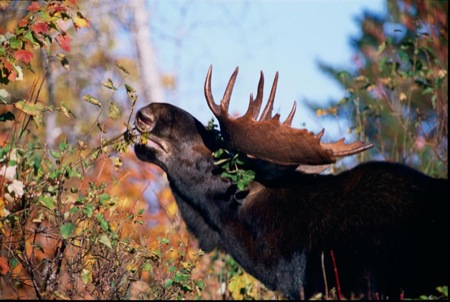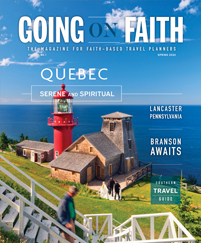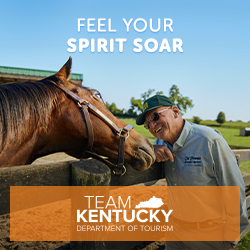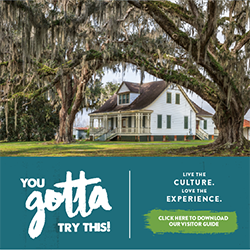
Courtesy NEO
New England Outdoor Center
Millinocket, Maine
Nestled in Maine’s 10 million-acre Northern Forest, the campus of the New England Outdoor Center is surrounded by protected land and gives visitors numerous ways to see moose, deer, black bears, bald eagles and other wild animals.
“We operate a variety of different tours for exposing people to wildlife,” said owner Matthew Polstein. “Our No. 1 tour is one that goes out on a lake on our sporting camp. We go out on a pontoon boat with parties of 12 to 14, and we travel around the lake and the wetland areas. Those are feeding ground for moose.”
Polstein said that May and June are the best months for moose-viewing, with some guests seeing up to 60 moose on a single sightseeing tour. At other times of year, white-tailed deer, otters, beavers and Canada geese proliferate.
In addition to the pontoon boat excursions, active groups can choose to explore the area by canoe; some visitors opt to take the trip in a van. However they go, the groups are led by guides who are well versed in both local wildlife and the logging history of the area. Guides often teach guests how to identify different animal tracks and other tricks of outdoorsmanship.
www.neoc.com
Gatlinburg and the Smokies
Tennessee
The Smoky Mountains of eastern Tennessee are one of America’s favorite vacation destinations and one of its favorite places for wildlife-viewing. Visitors come to Gatlinburg and the Great Smoky Mountains National Park for a glimpse of black bears and other animals known to roam the area.
“The national park is full of bears,” said Jim Davis, public relations coordinator for the Gatlinburg Department of Tourism. “There are about 1,500 bears now, and they could pop up anywhere. They could walk out across the road in front of you, or you could see them on any of the 800 miles of trails.”
The national park comprises more than half a million acres, with numerous sections that are likely candidates for wildlife sightings. Cataloochee, in the northeastern area of the park, is home to a herd of several hundred elk. Cades Cove, an 11-mile loop through the valley, has deer and wild turkeys, as well as bears, who often cause “bear jams” of touring automobiles.
On top of a mountain just outside of the park, Ober Gatlinburg has a habitat for a family of black bears, along with owls, river otters and other animals native to the area.
www.gatlinburg-tennessee.com
Virginia Beach
Virginia
With 18,600 acres of state parks and wildlife refuges, as well as 121 miles of navigable waterways, Virginia Beach offers groups numerous opportunities to see animals on land and at sea. The Virginia Beach Convention and Visitors Bureau has created a number of outdoor itineraries, called Live the Life Adventures, to give groups a taste of its great outdoors.
“One of our most popular adventures is the Eco-Wildlife Safari,” said Ron Kuhlman, the bureau’s vice president of marketing and sales. “That takes the group into Back Bay National Wildlife Refuge. You travel by tram and look for signs of bobcat, fox, deer, coyotes and feral pigs.”
Groups also enjoy visiting a number of area waterfowl refuges, home to more than 300 species of birds, such as black skimmers, sanderlings, tundra swans and brown pelicans. Ocean-lovers can see humpback whales on cruises in the wintertime and bottlenose dolphins during the warmer months. For a more intimate experience, opt for a kayaking tour, which takes visitors paddling amidst groups of dolphins, who will often swim right up to the sides of the kayaks.
www.visitvirginiabeach.com









